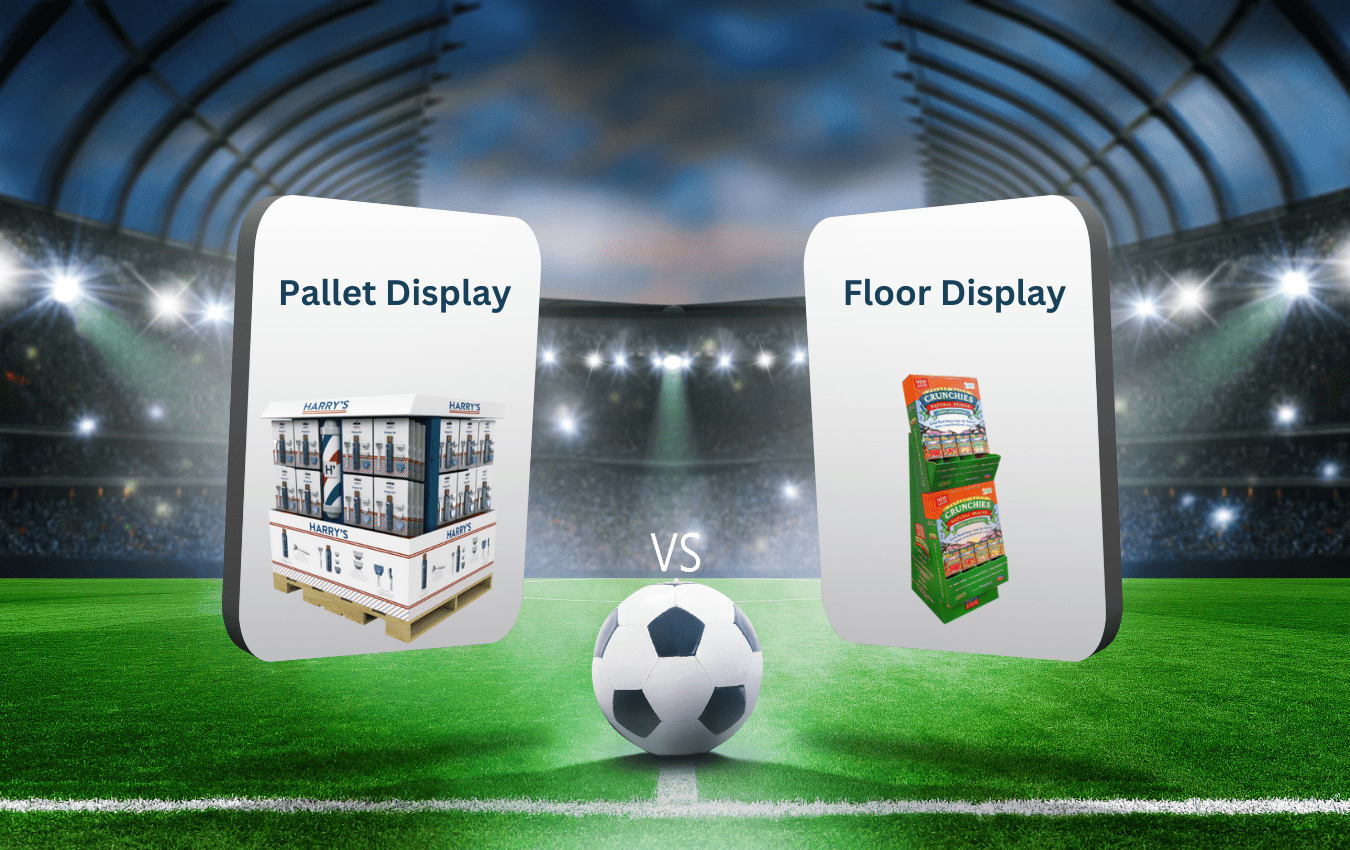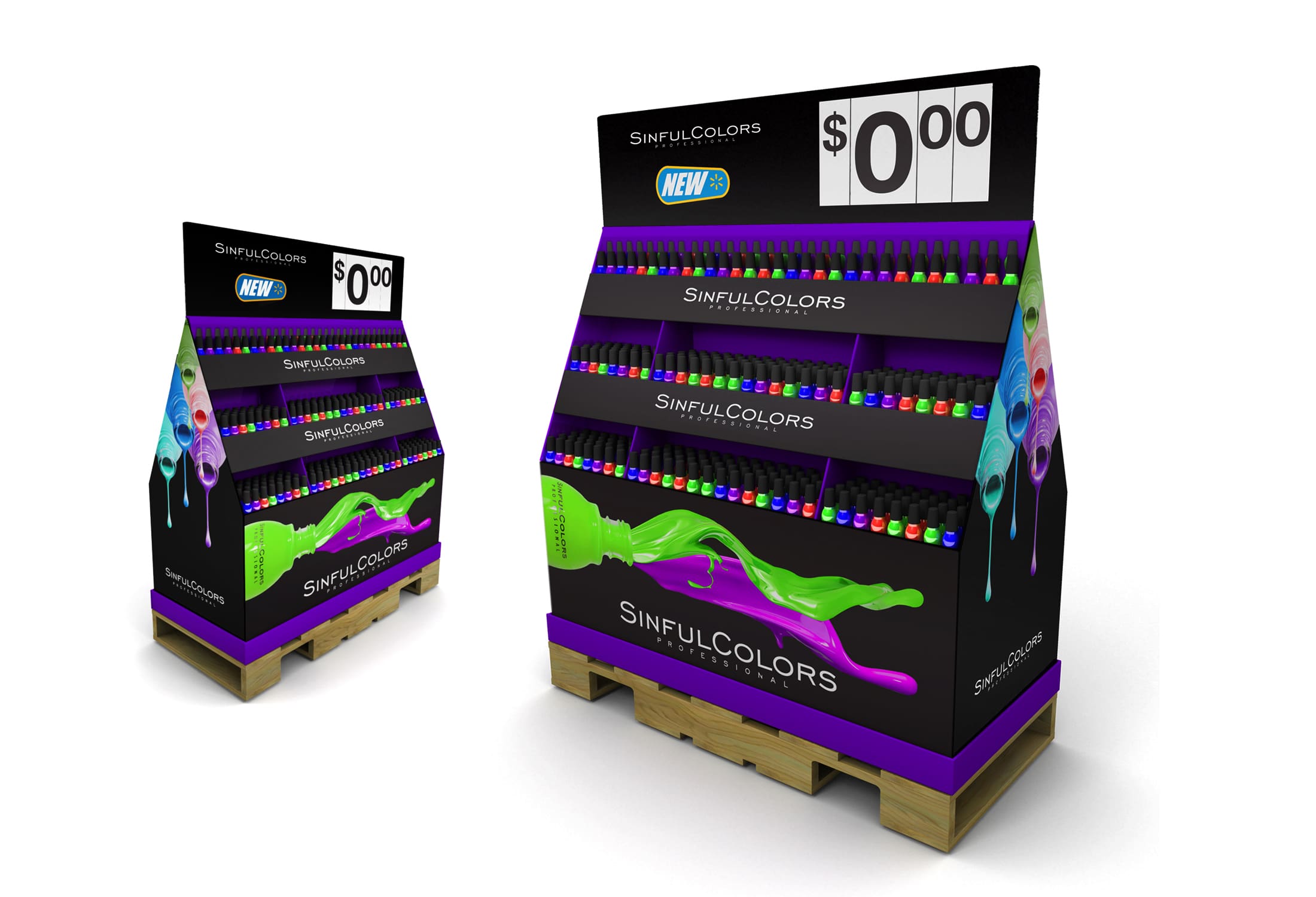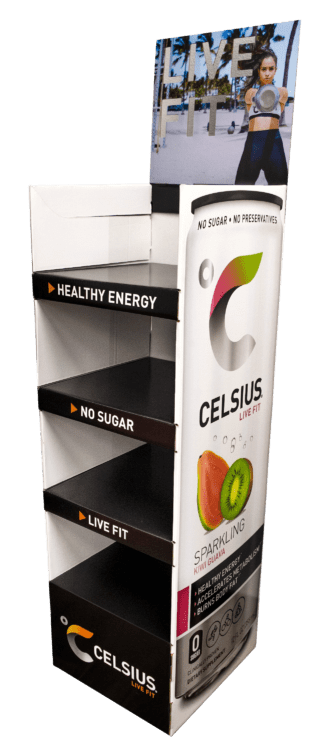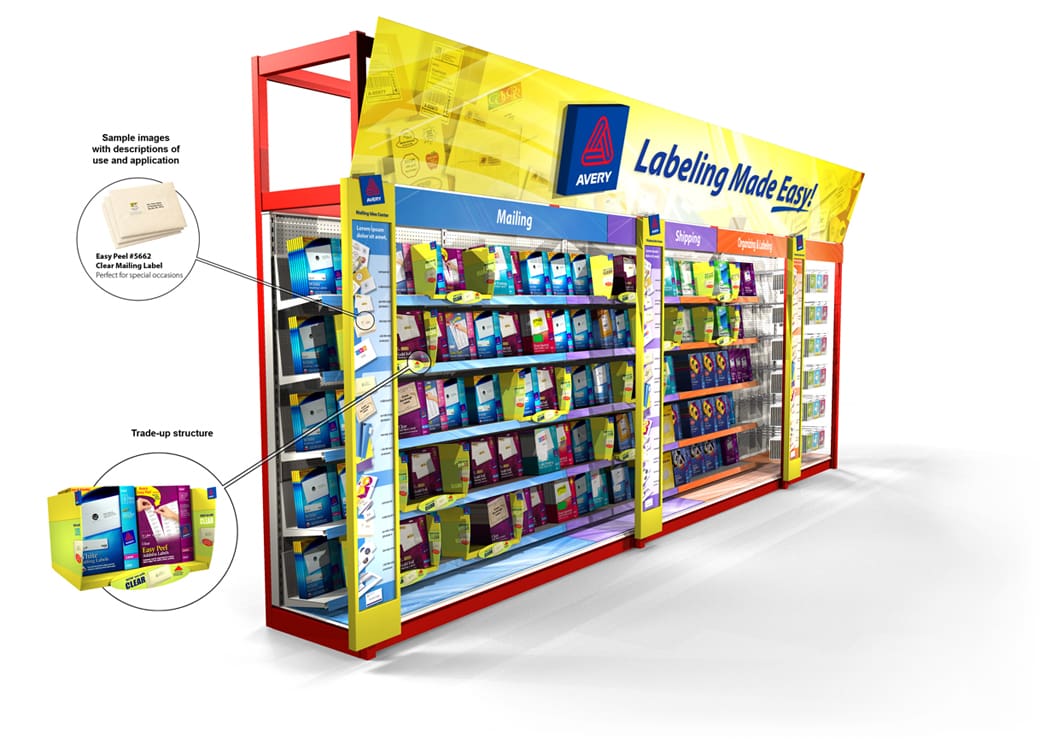Home » Pallet Display Vs Floor Display: What is the Difference?
Pallet Display Vs Floor Display: What is the Difference?

In the ever-evolving landscape of retail marketing, the art of product presentation plays a pivotal role in captivating consumers and driving sales. Two popular options that consistently grab attention are pallet displays and floor displays. While both serve the purpose of showcasing products in a retail environment, they possess distinct characteristics that cater to different strategies and objectives.
In this comprehensive guide, we’ll unravel the differences between pallet displays and floor displays, helping you make informed decisions that align with your brand’s goals and consumer engagement tactics.
Pallet Displays: The Power of Bulk Presentation
Pallet displays, as the name suggests, involve arranging products on a pallet, often with the assistance of corrugated cardboard structures. These displays are designed to be placed directly on the floor of a retail space on a pallet, instantly drawing attention to a curated selection of products. Pallet displays offer several advantages that make them a preferred choice for many brands:
Mass Exposure: Pallet displays allow brands to showcase a significant quantity of products in a single unit, making them ideal for promotions, new launches, or seasonal offerings.
Ease of Stocking: Retailers can swiftly replenish products by replacing the entire pallet, ensuring a consistent display even during busy shopping periods.
Strategic Placement: Placed at high-traffic areas within the store, pallet displays capitalize on consumer foot traffic, increasing the likelihood of impulse purchases.
Visual Impact: With ample space for eye-catching branding and graphics, pallet displays create a compelling visual presence that resonates with consumers.

Floor Displays: Elevating In-Store Engagement
Floor displays encompass a broader category of displays that are positioned directly on the retail floor but aren’t limited to pallets. These displays can take various forms, such as standalone structures, shelving units, or modular arrangements. The versatility of floor displays offers unique benefits:
Customization: Floor displays can be tailored to fit specific product dimensions, enabling a tailored presentation that showcases products at their best.
Interaction: Some floor displays feature shelves, hooks, or compartments that encourage tactile interaction, allowing customers to explore products hands-on.
Flexibility: Floor displays can be strategically placed throughout the store, guiding customers along specific pathways and encouraging exploration.
Targeted Segmentation: Different types of floor displays can be used to cater to various customer segments or product categories within the same store.

Pallet Display vs. Floor Display: Making the Right Choice
When deciding between pallet displays and floor displays, consider the following factors:
- Product Type: The nature of your products will influence the type of display that best suits them. Pallet displays are excellent for bulkier items, while floor displays allow for a wider range of product shapes and sizes.
- Goals: Identify your goals—whether it’s to promote a new product, clear excess inventory, or create a branded experience. Your objectives will help determine the most suitable display type.
- Store Layout: Assess the layout of the retail space. Pallet displays may be more suitable for larger open areas, while floor displays can be strategically positioned to guide customer flow.
- Branding: Consider the amount of branding and messaging you want to incorporate into the display. Pallet displays offer more surface area for graphics, while floor displays can focus on showcasing the product itself.
In Conclusion: Balancing Form and Function
Pallet displays and floor displays each offer unique advantages that can significantly impact your brand’s in-store presence. The decision ultimately hinges on your products, branding strategy, and store layout. By understanding the differences between these two display types and aligning them with your objectives, you can create captivating in-store experiences that resonate with consumers, drive sales, and enhance your brand’s overall retail presence.
If you are interested in pop displays, then partner with Brown Packaging today to get started.
With new tariff proposals and continued trade uncertainty, 2026 is shaping up to be another pivotal year for packaging sourcing strategy. Many companies that shifted
Following multiple rounds of tariff changes and trade policy adjustments, 2026 marks a turning point for U.S. packaging buyers. Many who previously transitioned from China
Shifting packaging production from China to the U.S. can help stabilize costs, reduce tariff exposure, and shorten lead times. But the transition process requires careful
RSC boxes are known for their efficiency and versatility, but their performance ultimately comes down to strength. Buyers often see numbers like ECT, BCT, and
In packaging, foam isn’t just about initial protection — it’s about maintaining performance over the entire shipping or storage cycle. Compression set and recovery characteristics
Pouches are a go-to for flexibility and convenience, but they can fail in critical ways—from poor seals to punctures and delamination—that hurt performance and brand
Home » Pallet Display Vs Floor Display: What is the Difference?

The design and prototyping phase is a pivotal step in the creation of a Point of Purchase (POP) display. It’s where the conceptual groundwork laid

Point-of-purchase (POP) displays must catch a shopper’s eye while also moving efficiently through the supply chain. Striking the right balance between visual impact and logistics

In the competitive retail landscape, capturing consumers’ attention is more crucial than ever. One strategic approach to achieve this is through effective point of purchase


